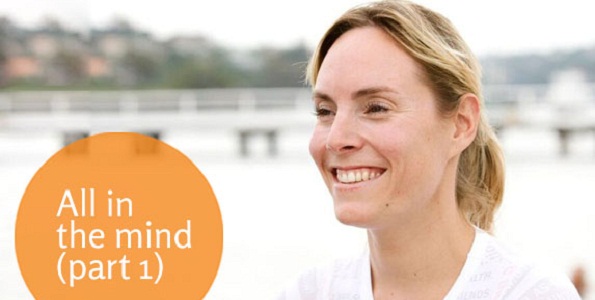All in the mind (part 1)
This is the first of two blogs about mindfulness and meditation. In this blog I’ll try to explain them, the difference between them and why they’re good for us. Next time, I’ll talk about how to go about practising them.
In the past year or so, whenever I’ve scanned the horizon for what’s going on in the world of wellbeing, I’ve come across the words ‘mindfulness’ and ‘meditation’. Suddenly they’re as fashionable as kale – appearing everywhere, not exactly tempting, but apparently the answer to all our problems.
What made me sit up and pay attention was their appearance in nearly every corporate journal. Take this article from Forbes Magazine, for example, describing how leading CEOs like Steve Jobs, Marc Benioff and Jeff Weiner are (or ‘were’, in Jobs’ case) strong believers in meditation. Or this one, from The Guardian, about Chade-Meng Tan, Google’s head of mindfulness training. Yes, it’s a real job and his official title is – believe it or not – Jolly Good Fellow.
All very well, but I’ve never been sure about what mindfulness and meditation actually mean, or if they are as powerful as people claim. They seem to be wrapped in mystery, particularly about how to actually ‘do’ them. To get the benefits, would I have to sit in full lotus, thumb to middle finger, for two hours a day? Would I have to wear patchouli oil and chant a mantra? What’s the difference between mindfulness and meditation, anyway?
So in the interests of Springday and our clients I’ve spent the last couple of months researching things. Here’s what I know so far:
There are hundreds of definitions of mindfulness and meditation but the common thread seems to be that mindfulness means to intentionally pay attention to the present moment, particularly to thoughts, feelings, bodily sensations and the surrounding environment. According to the Greater Good Science Center at the University of California, Berkley, ‘It involves acceptance, paying attention to our thoughts and feelings without judging them – without believing, for instance, that there’s a right or wrong way to think or feel in a given moment. When we practice mindfulness, we’re sensing in the present moment rather than rehashing the past or imagining the future’.
This makes sense. Most of us spend our time thinking about what we’ve done or what we’re about to do, rather than what we’re doing right now. And then, when we have to make a decision we ignore the present situation and our feelings, and go with preconceptions or knee-jerk reactions. Mindfulness can prevent us doing this, and can thus help us make better choices.
That’s just the start. Mindfulness (and meditation, but I’ll get to that in a moment) bring a range of scientifically proven benefits. Here’s just one example, published by the Harvard Business Review, and which explains how mindfulness can literally change your brain. Mindfulness can reduce stress, alleviate depression (at a level equal to anti-depressants), boost your immune system, improve focus, increase attentiveness, enhance relationships and reduce symptoms of illnesses such as IBS and chronic fatigue. All this for free, so we should take it seriously.
OK. So what about meditation? Meditation, which has its roots in ancient Buddhism, is the formal practice of mindfulness. Meditation seeks to train the mind by removing it from the worthless chatter of the everyday. With meditation, you set aside time to do nothing else but focus your mind. With mindfulness, you apply a similar mental practice, but piecemeal, and when you’re just living your life.
It’s like the difference between the gym and housework. When you go to the gym, you go to a specific location, get ready, and devote time to the singular task of improving your fitness. When you work around the house, you help your body, but while you do other things, and not as intensely.
According to Jon Kabat-Zinn, you can cultivate mindfulness through meditation but you can also achieve it by everyday practice, by ‘living your life as if it really mattered, moment by moment by moment by moment.’ (And oh, boy, that resonates with me, when I think of the times when my kids try to talk to me and instead of listening I’m on the phone, or cooking, or doing something else – ouch!)
So how do you actually ‘do’ mindfulness and meditation? I’ll go into that in my next blog, All in the Mind Part 2. In the meantime, let’s enjoy every minute of our lives.
What’s going on
6 ways gamification can help your business: could your company do with a productivity boost? Here are a few ways gamification can help.
Work-life balance – how to do it better: writer Jeff Haden argues that life skills inform work skills, and thinks about how we can use them to succeed at both.
Get more done by focusing less on work: here’s another article about work-life balance. This one argues we get more done by focusing on areas of life we care most about. It sets out practical ways to do this, by experimenting with and building on small, achievable changes.
Why digital entrepreneurs are tackling women’s health: the level of institutional capital raised by digital health companies, and which focuses exclusively on women’s health, has gone from $2 million (US) in 2011 to $29 million in 2014, to $82 million so far in 2015. This great piece explains why women’s health has suddenly become such a big market.
What will the (tech) world look like in 2020: how will technology develop in the next five years? This piece covers the sharing economy, mind power, the internet of things, virtual reality and – wait for it – glocalisation.
Artificial intelligence – how will we contain it? A couple of newsletters ago I ran a link to an article in which Elon Musk warns that the very robots we create could eventually destroy us – and gurus like Stephen Hawking and Bill Gates have also warned of the dangers of uncontained artificial intelligence (AI). Here, Stephen Johnson examines the argument that AI poses more of an existential threat than environmental or nuclear catastrophes.
And, PS, Did you catch last week’s ep of The Good Wife, which dealt with just this topic?
What motivates us to work? According to this thought-provoking piece, a recent Gallop study of 230,000 full- and part-time workers in 142 countries found that only 13% feel engaged and fulfilled by their jobs. Psychologist Barry Schwartz argues that we’ve created our dissatisfaction with work and that incentives, rather than motivating us, warp our understanding of meaningful work.
The real reason you didn’t get that job: and speaking of work, have you ever been interviewed for a job, and didn’t get it? What should you do after the interview, what can you learn from the experience and how can you do it better next time?
How much yoga does it take? Do you go to one yoga class a week and then feel guilty because you’re not getting on the mat every day? You aren’t alone. Here’s how even a weekly session can help, and what other yogic benefits can come your way.
The fitness of wearable tech: the research is coming in, and it’s mixed. Fitness trackers definitely get results, but they can be counterproductive, with some researchers claiming they have a dark side as well.
Tech tips
At Springday, we have a holistic view of wellbeing. We base it on five pillars – physical, emotional, social, career and financial.
Here’s a tip for improving your financial wellbeing. It comes from ASIC and it’s called Moneysmart. It’s a fantastic website with sections on managing your money, borrowing, insurance, super, investing, scams…and much more.
Moneysmart’s even got a free and very easy to use, award winning app called TrackMySpend. You can get it from Apple’s app store or, for androids, from Google Play. It does what it says – helps you track what you do with your hard-earned money and shows you how you’re travelling against your budget.
And another thing
How a raisin can predict a toddler’s future academic ability: here’s the research, the test, and what it reveals.
Can you spot a liar? Here are two transcripts appealing for help finding a missing pet. Which owner has really lost the pet, and what mistakes did the liar make?
Man holds baby! It’s just a photo of a man holding a baby. Actually, it’s a photo of a lecturer, lecturing, holding a baby. And it’s sparked a huge online reaction.
Unless you’ve been living under a rock… you will have know our Operations Director Georgia Nass got married on Saturday the 21st of November. And we have some pics to share…the professional ones haven’t come through yet but we didn’t want to keep you waiting!
Thought of the day
It is not the strongest of the species that survive, nor the most intelligent, but rather the one most adaptable to change.
– Charles Darwin










